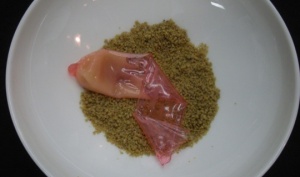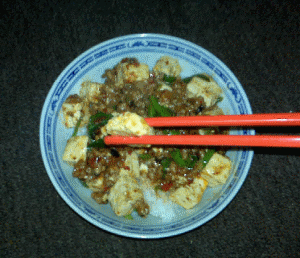Here’s a suggestion for the culinary equivalent of a parlor game: take five ingredients, any ingredients, and devise a dish utilizing those ingredients. Now, come up with another one. And another one. And another one. Continue doing this until either a) you’ve exhausted all the possibilities or, b) you’re simply exhausted.
What shall we call this fun, new game? Marketing!
Pizza Hut’s big commercial entry in this year’s Super Bowl commercial extravaganza – apparently to much fanfare on Pizza Hut’s part – was an exciting new addition to their menu, Big Pizza Sliders. In other words, little, tiny versions of the same thing they’ve been selling since 1958.
This approach is hardly new. As a friend of mine often jokes – scoffing, mind you – Taco Bell’s menu selection is the same ingredients (tortilla, meat, and cheese) packaged and repackaged into various versions over and over again. In fact, if you look at pretty much any chain restaurant menu, you’ll find it’s a fairly standard approach. Kentucky Fried Chicken – excuse me, KFC – sells chicken. They sell many versions of chicken because, after a while, sales begin to drop as customers’ interest wane and it becomes imperative to make that chicken look like something potential customers have never had before. At the same time, they have to be consistent in their offerings so that customers will know exactly what they’ll get, no matter which branch of the restaurant they’re visiting. Remember the 600-calorie Double Down with 1600 mg of sodium? Two pieces of fried chicken sandwiching a filling of bacon and cheese. Apparently, it’s still out there, shoring up the 290-calorie potato wedges and the 800-calorie, 64 oz Sierra Mist soft drink because how else will you make it from lunch to dinner without 1700 calories to fuel your afternoon?
But I digress.
Companies like Pizza Hut which, along with Taco Bell and KFC, is part of the enormous Yum! Brands conglomerate, have to generate revenue. They’re not in business to feed people, they’re generating revenue by feeding people. And it’s a lot of revenue. Last year, pizza restaurants in the US generated more than $36 billion in sales. In 2011 Yum!, alone, generated $1.3 billion in profits worldwide. How do they do that? Paradoxically by offering both consistency and novelty.
This is an issue faced by just about every food producer in the marketplace. Budweiser – the American one, not the Czech one – has very little new to offer its customers so much of its effort goes into packaging, rather than contents. Coors, another iconic American beer, faces the same problem. Its customers don’t want the product to change but the company still needs to maintain existing customers’ interest and draw in new consumers, as well. Its response to this quandary six years ago was to add a temperature sensitive label to the bottle.
Consumers tend to keep their refrigerators set to between 40º and 45º F,” reported the trade journal Packaging World back in 2007, “so the label color starts to change around 48º F and is at full color between 40º and 44º F, indicating the beer has reached the perfect temperature.”
In other words, novelty labeling nothing new.
Still, the buzz generated by something as mundane as making a teeny version of something customers have been ordering for the past 55 years can be substantial. Pizza Hut’s Facebook page was filled posts and commentary about its planned giveaway of samples of the Big Pizza Sliders.
Comments ranged from negative (“I called there’s a limited quantity and its only pepperoni they will be ready and its small like a biscuit! Always a catch!”) to the disturbingly enthusiastic (“Hope everyone enjoys the Big Pizza Sliders today. Another simple, hand held variety option from Pizza Hut!”), which leaves me wondering just how many shills are populating Facebook feeds.
When you’re selling the same old thing, any publicity, evidently, is good publicity.










